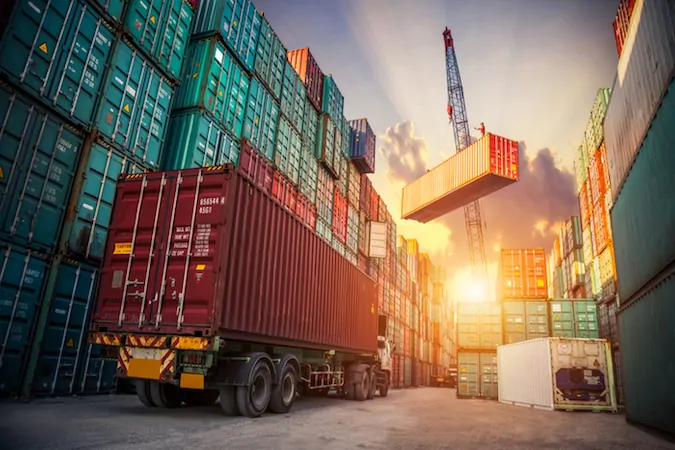These days, every company is competing in an environment where technology and new ideas are changing things faster than ever.
While every sector is undergoing significant changes in the way they do business, it’s hard to imagine an area that will be as fundamentally transformed as the logistics industry.
The logistics industry — which includes manufacturing, wholesale, distribution, and transportation companies — is on the cusp of some revolutionary changes in how products make it to market. Here are the three logistic trends that may have the biggest impact.
Logistics trends to watch out for
Drones
In the last decade, Unmanned Aerial Vehicles (UAVs) have gained popularity as consumer devices and have been tested for their potential commercial applications, most famously by Amazon’s Jeff Bezos.
Overall, drones remain a niche technology. But that’s all poised to change when the logistics industry gets into the action en masse.
Drones have the potential to reduce labor costs while making inventory management and distribution more efficient than ever. In a fascinating research report by PwC, they predict delivery drones may become commonplace sooner than we think. In the UK, they predict there will be over 76,000 in the skies by 2030. Of that number, nearly 15 percent are expected to be for logistics purposes. The report also predicts that drones will be one of the top logistics trends as they become ubiquitous in warehouses. The uses of drones will range from helping to scan in-house inventory to being dispatched as delivery vehicles.
The impact of drones may go well beyond last mile delivery of small packages. A Spanish company has already developed a UAV that can carry nearly 2000 kilograms of freight and even land on water. This may eventually open new opportunities further up the supply management chain.
3D printing
3D printing has been hailed as potentially the single biggest disruptive phenomenon to impact global industry since the introduction of assembly lines.
The hype mainly revolves around the technology’s potential to decentralize the means of production on a mass scale. In theory, one day consumers may no longer need to go to a hardware store for drill bits or a clothing store for a new pair of paints. All they would need to do is purchase the digital design and raw materials to print out the product at home. This would massively disrupt the supply chain, as companies would no longer rely on cheap overseas production. Instead, the logistics industry’s focus would shift toward raw materials.
However, in the nearer term we are more likely to see the impact of 3D printing in warehouses. A recent Forbes article gives the example of an automotive parts warehouse, which has to be stocked in great quantities to meet the wide variety of demands across different makes and models. A lot of that inventory sits idle, taking up shelf space for if and when a particular order arises. Alternatively, the warehouse don’t stock a certain part at all and the consumer loses by having to purchase it from a more remote location.
3D printing could effectively eliminate that problem by moving warehouses from traditional static inventory toward digital inventory, where shelves of spare parts are replaced by digital design files that can be printed on demand.
Physical Internet
The next big thing in logistics trends is called the Physical Internet (PI). This is an idea that aims to take the principles that make the Internet so efficient and apply them to the physical world of logistics. The concept is the brainchild of Professor Benoit Montreuil of the Georgia Technology Institute, who first proposed it in 2011.
Think of it like this: When you send a digital photo, the picture gets broken down into smaller information packets, like a whole puzzle being broken. To avoid traffic jams, the different puzzle pieces flow through different routes and are processed at various hubs to reach the receiver’s screen as quickly as possible, where they are then reassembled into a whole picture.
The goal of PI is to apply that same logic to physical objects. For example, it’s estimated that about 20 percent of transport trucks on the road are empty at any given time as they go to their next location to fill their freight again. Many more are partially empty. PI aims to move freight toward 100 percent capacity at all times by building an open, interconnected network with the aid of standardized “smart” containers and cross-docking hubs shared by numerous companies.
There are already signs of this idea taking hold, most notably in the European Union, which through the Alliance for Logistics Innovation through Collaboration (ALICE) has a strategy to implement a bona fide Physical Internet network by 2050.
Barriers exist for these logistics trends, but the potential is enormous
There are multiple barriers to overcome before these logistics trends can truly take hold. For instance:
- Regulations regarding drones are complicated and still very much a work in progress.
- 3D printing presents serious challenges related to intellectual property protection.
- The Physical Internet will require unprecedented collaboration amongst governments and the logistics sector to agree on standards and protocols.
However, these problems will eventually be solved, which means the routes your products take will start to look a lot different than they do today. With this in mind, now is the time to stay informed. By embracing these new technologies as they emerge, you’ll set your company up to stay competitive and deliver on changing customer expectations.
To boost efficiency and automate your workflows, consider integrating with Method CRM. See how Method helped a shipping container company’s revenue double in just three years below.
See how Method CRM propels logistics businesses forward.


